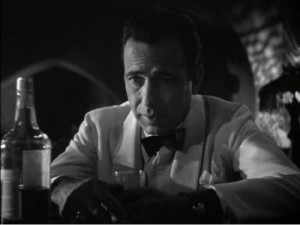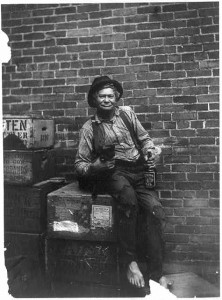What is in a name? For Shakespeare, a rose was a rose no matter what name arose.
For ol’ Will, Four Roses would still be a whiskey by any other name. But, that word, whiskey, has shifted its meaning to people through the years. At one time, the very mention of it was a thorny issue, evoking images of illicit stills and immoral alcoholics. I had an experience the other day which shows the pendulum has gone the complete opposite direction.
Whiskey Blue. The name sounds mysterious. Like a secret speakeasy password in the days of prohibition. But, alas, it is the name (or variations on the name) of a series of high-end lounges in some of the nicer hotels in large cities throughout the U.S. The décor is design, the clientele chic, and the atmosphere is A-list. I had stopped into the LA version of Whiskey Blue for an event. I was pre-occupied with the pretty people and polite conversations for the first part of my visit when a thought snapped me out of the moment: where was all the whiskey?
If one is audacious enough to use whiskey in a bar name then certainly the establishment will overflow with the golden elixir, won’t it? Not necessarily. The bar had a decent selection of whiskies, but nothing in terms of quality or quantity that would differentiate it from other upscale lounges as a whiskey bar. So, if whiskey isn’t the point of a bar that uses Whiskey in its name then why call it “Whiskey Blue”?
I bought my first bottle of whiskey when I was in college (of legal age). The whiskey was Jim Beam and I don’t recall why I chose that particular brand aside from having heard of the name. However, I knew exactly what drove me to buy the whiskey – a broken heart. Such is the way of young romance. I was depressed, lonely and had no idea how to handle the situation. But, I knew that Bogart would drink whiskey in his darkest moments. I’d  seen an episode of Magnum P.I. when I was a kid where the flashy detective exchanged his standard stout for a bottle of whiskey when a woman left him broken and alone.
seen an episode of Magnum P.I. when I was a kid where the flashy detective exchanged his standard stout for a bottle of whiskey when a woman left him broken and alone.
My knowledge of whiskey at that point was non-existent and my knowledge of women even less. But, I knew drinking a whiskey in that moment connected me with other people who had been in that same heartbroken position (even if they were fictional). The very act of embracing that word “whiskey” was a short-cut to relating to a shared human experience and an early lesson in manhood. It wasn’t the physical whiskey that did this – it was all that the word represented which took me down that path.
Today, whiskey is no longer primarily associated with boozers or broken hearts. The word has developed a certain cachet among those who consider themselves trendsetters. Whiskey isn’t limited to something that sad men seek when they want to dive into their feelings – it’s something that beautiful women seek when they’re out on the town, dressed stunningly and desiring a unique and complex cocktail — though it may only contain the smallest drops of whiskey.
My original intention when I sat down to write this was to criticize Whiskey Blue for misappropriating a word they don’t understand. But, just as uisge beatha evolves and changes over time as it interacts with the surrounding environment, so too do the images and lifestyles the word whiskey evokes. And, so too does my understanding of the use of the word. If whiskey, the water of life, can serve as a metaphor for life, then the word can be applied to more than just the liquid. The word needs to attach itself to the current moment, the cultural zeitgeist and allow new generations to share common connections with each other through the conduit of “whiskey,” even if it means they don’t actually drink it.

